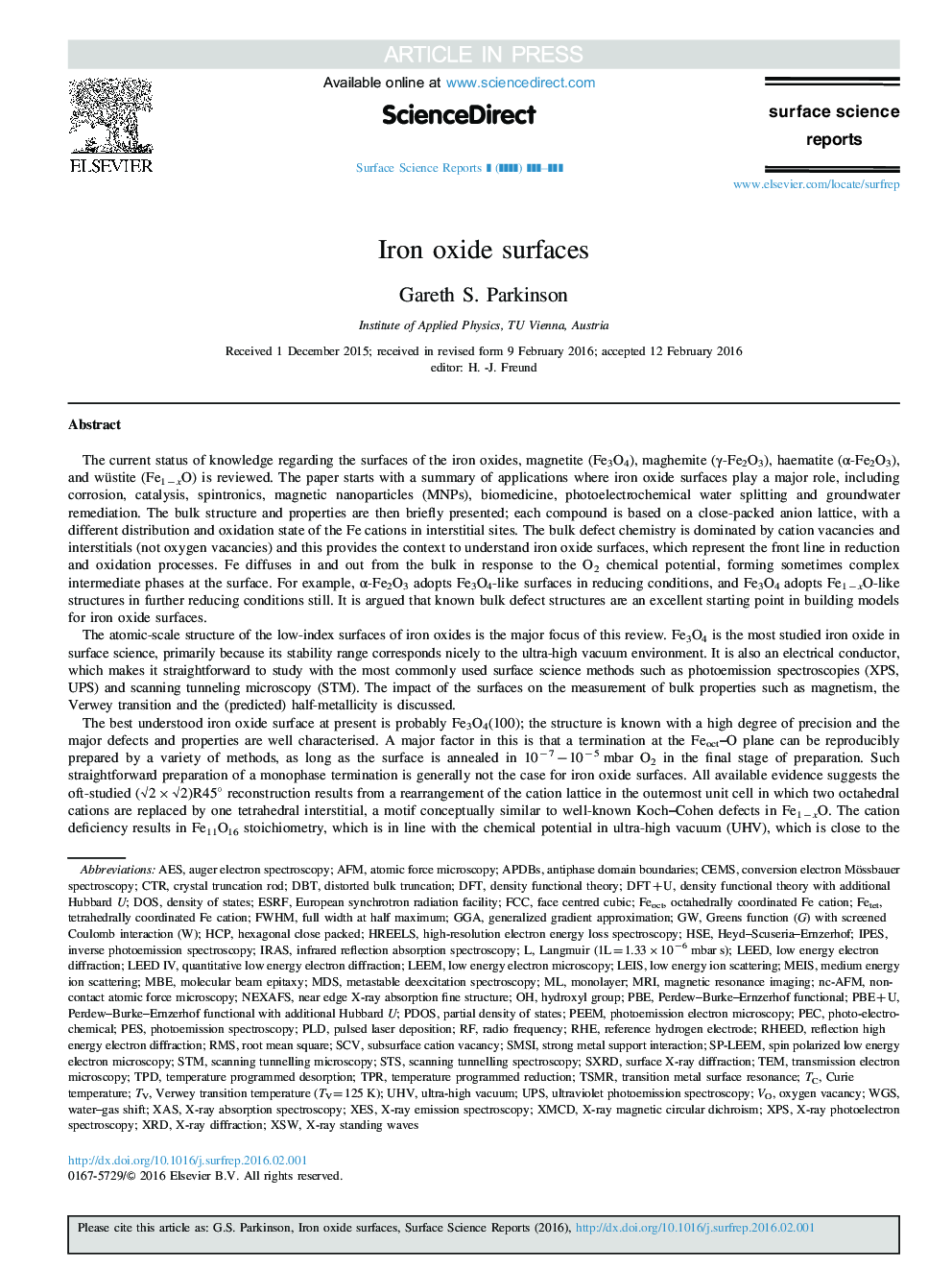| Article ID | Journal | Published Year | Pages | File Type |
|---|---|---|---|---|
| 7845060 | Surface Science Reports | 2016 | 94 Pages |
Abstract
In the latter sections the literature regarding adsorption on iron oxides is reviewed. First, the adsorption of molecules (H2, H2O, CO, CO2, O2, HCOOH, CH3OH, CCl4, CH3I, C6H6, SO2, H2S, ethylbenzene, styrene, and Alq3) is discussed, and an attempt is made to relate this information to the reactions in which iron oxides are utilized as a catalyst (water-gas shift, Fischer-Tropsch, dehydrogenation of ethylbenzene to styrene) or catalyst supports (CO oxidation). The known interactions of iron oxide surfaces with metals are described, and it is shown that the behaviour is determined by whether the metal forms a stable ternary phase with the iron oxide. Those that do not, (e.g. Au, Pt, Ag, Pd) prefer to form three-dimensional particles, while the remainder (Ni, Co, Mn, Cr, V, Cu, Ti, Zr, Sn, Li, K, Na, Ca, Rb, Cs, Mg, Ca) incorporate within the oxide lattice. The incorporation temperature scales with the heat of formation of the most stable metal oxide. A particular effort is made to underline the mechanisms responsible for the extraordinary thermal stability of isolated metal adatoms on Fe3O4 surfaces, and the potential application of this model system to understand single atom catalysis and sub-nano cluster catalysis is discussed. The review ends with a brief summary, and a perspective is offered including exciting lines of future research.
Keywords
AFMPLDFCCPECPBEPESTPDWGSSMSIRHENEXAFSSTSHCPHSESTMRMSMDSCTRFWHMDBTLEEDXMCDMEISSCVMBEUHVPDOSSXRDESRFPEEMIRASCEMSIPESXESLEEMNC-AFMXSWAesGGADFTDFT+UXASX-ray magnetic circular dichroismX-ray standing wavesMRIMolecular beam epitaxyTemLEISPartial density of statesDensity of statesEuropean synchrotron radiation facilityMagnetic resonance imagingStrong metal support interactionWater–gas shiftGeneralized gradient approximationoxygen vacancyUltra-high vacuumDOStemperature programmed desorptionCurie temperatureTPRRHEEDNear Edge X-Ray Absorption Fine StructureHexagonal close packedAuger electron spectroscopyPhotoemission spectroscopyHigh-resolution electron energy loss spectroscopyX-ray emission spectroscopyScanning tunnelling spectroscopyX-ray absorption spectroscopyInfrared reflection absorption spectroscopyUltraviolet photoemission spectroscopyInverse photoemission spectroscopyMetastable deexcitation spectroscopyX-ray photoelectron spectroscopyConversion electron Mössbauer spectroscopyXPSfull width at half maximumRadio frequencyPulsed laser depositionMonolayerface centred cubicroot mean squareCrystal truncation rodPhotoemission electron microscopyTransmission electron microscopyLow energy electron microscopyScanning tunnelling microscopyatomic force microscopyNon-contact atomic force microscopyDensity functional theoryHREELSXRDX-ray diffractionSurface X-ray diffractionReflection high energy electron diffractionLow energy electron diffractionLow energy ion scatteringMedium energy ion scatteringTemperature programmed reductionHydroxyl groupUPS
Related Topics
Physical Sciences and Engineering
Chemistry
Physical and Theoretical Chemistry
Authors
Gareth S. Parkinson,
